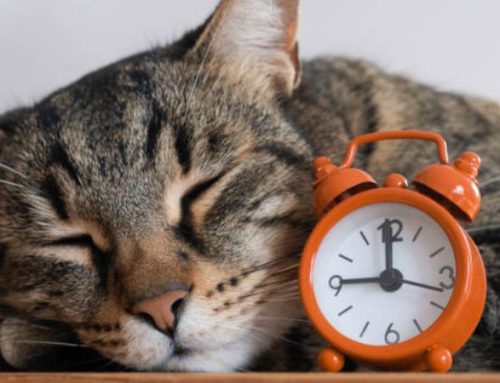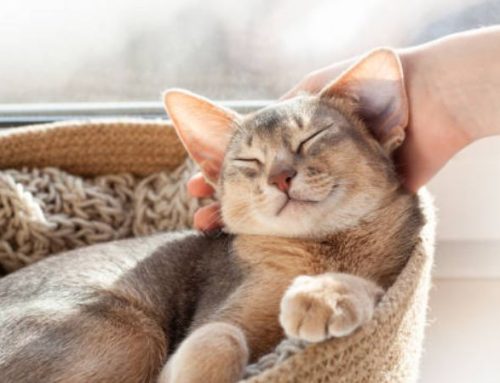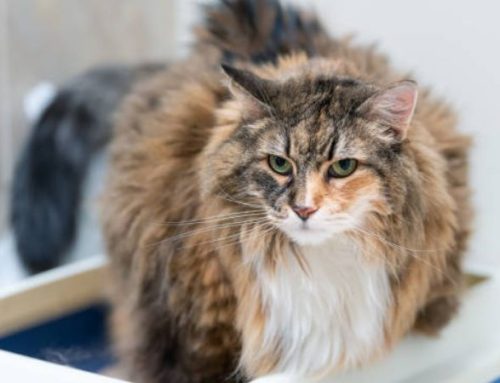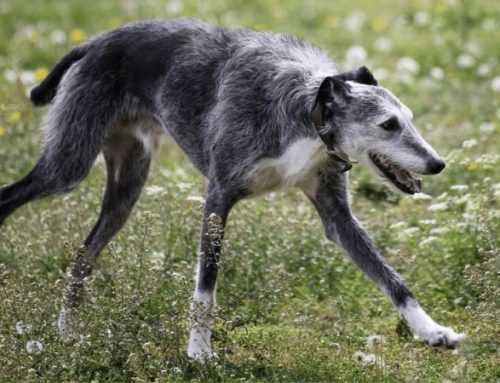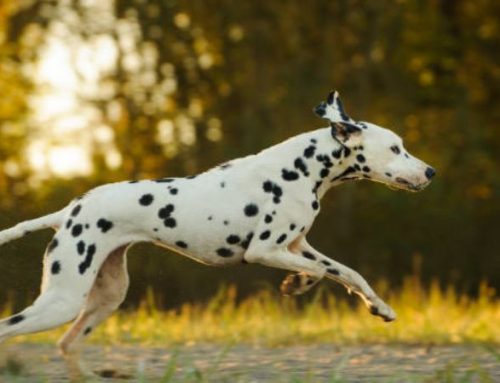When a cat is diagnosed with kidney disease, diet plays a key role in supporting their health. While prescription foods are common, there are also vet-approved, non-prescription options that help maintain kidney function, manage phosphorus and protein intake, and keep your cat thriving.
This guide highlights the best over-the-counter foods for cats with kidney disease, giving you practical, veterinarian-backed choices for both dry and wet diets that are palatable and nutritionally supportive.
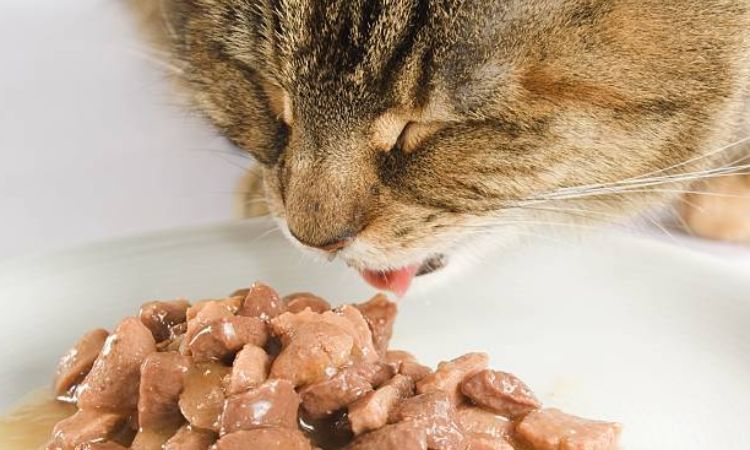
Understanding Kidney Disease in Cats
Kidney disease is one of the most common conditions affecting older cats. Cats have two kidneys, which filter waste from the blood, regulate fluids, maintain electrolyte balance, produce hormones like erythropoietin, and support red blood cell production. When the kidneys are damaged or lose function, waste products such as creatinine and blood urea nitrogen build up in the bloodstream, leading to symptoms like increased thirst and urination, nausea, vomiting, weight loss, muscle wasting, and decreased appetite.
Kidney disease can be acute, caused by injury, infection, toxins, or medication, or chronic, progressing slowly over months or years. Chronic kidney disease (CKD) occurs when the kidneys have lost a significant portion of their function and cannot regenerate. Early detection is crucial, as proper management can help slow progression and improve quality of life.
Why Diet Matters for Managing Kidney Disease
Diet plays a critical role in managing kidney disease. A proper diet can reduce the kidneys’ workload, control the buildup of waste products, maintain hydration, balance minerals, and support overall health. Cats with CKD often require diets that are lower in phosphorus and moderately reduced in protein to prevent further kidney stress. Adequate hydration is also essential, so wet or canned foods with higher moisture content are often recommended.
Other dietary factors include:
- Potassium: Cats with CKD can lose potassium in urine, so diets for kidney support often include increased potassium to maintain healthy levels.
- Omega-3 fatty acids (EPA & DHA): Help reduce inflammation and oxidative stress in the kidneys.
- Sodium: Mild restriction may reduce kidney workload and help maintain healthy blood pressure.
Feeding the right diet can improve clinical signs like nausea, vomiting, and poor appetite while helping maintain body weight and quality of life.
Differences Between Prescription and Non-Prescription Cat Food for Kidney Disease
Prescription renal diets are specifically formulated by veterinary nutritionists to target the unique needs of cats with kidney disease. They often have precisely balanced levels of protein, phosphorus, sodium, potassium, and fatty acids, and are available only through veterinary approval.
Non-prescription (over-the-counter) foods for kidney support are more widely available and do not require a vet’s prescription. While they may not be as tightly controlled in nutrient composition as prescription diets, many vet-approved OTC options are formulated to:
- Reduce phosphorus and moderate protein levels.
- Support hydration with high-moisture content foods.
- Include essential nutrients like potassium and omega-3 fatty acids to support kidney function.
Choosing the right non-prescription diet can be a practical alternative for cats whose owners prefer accessible options, as long as it is used under veterinary guidance and combined with regular checkups, lab monitoring, and appropriate management of the disease.
Prescription Cat Food for Kidney Disease (Brief Overview)
Prescription diets are specially formulated foods designed to support cats with chronic kidney disease (CKD). These diets are created under veterinary supervision to precisely balance nutrients such as protein, phosphorus, sodium, potassium, and essential fatty acids, while helping reduce kidney workload and slow disease progression. They often come in both wet and dry forms, with flavors and textures tailored to maintain palatability, which is crucial for cats experiencing nausea or decreased appetite.
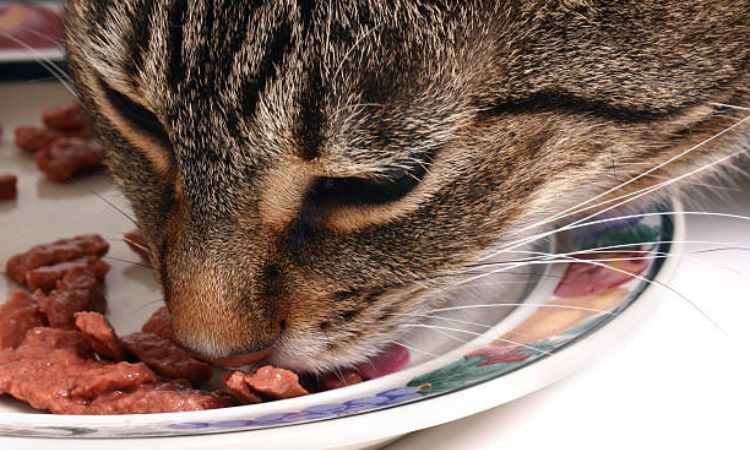
Common Prescription Foods
Some of the most widely recommended prescription renal diets for cats include:
- Hill’s Prescription Diet K/D Kidney Care – Available as both wet and dry options, this formula is designed to support kidney and heart function, control phosphorus levels, and provide high-quality protein to maintain muscle mass.
- Royal Canin Veterinary Diet Renal Support – Offered in several varieties such as E (pâté in gel), D (morsels), and T (slices), this diet focuses on low phosphorus, moderate protein, and enhanced palatability to encourage consistent eating.
- Purina Pro Plan Veterinary Diets NF Kidney Function – Formulated for early-stage CKD, it provides moderate protein, reduced phosphorus, and wet food options to support hydration.
- Blue Buffalo Natural Veterinary Diet Kidney & Mobility Support A preservative-free, low-phosphorus option available in both dry and wet forms, focusing on natural ingredients.
Pros and Cons of Prescription Options
Pros:
- Precisely formulated to manage kidney disease, including phosphorus and protein control.
- Designed to support hydration and nutrient balance.
- Clinically tested to slow CKD progression and improve quality of life.
Cons:
- Requires a veterinarian’s prescription for purchase.
- Some cats may be picky eaters and may refuse certain flavors or textures.
- Can be more expensive than non-prescription foods.
Why Some Pet Owners Seek Non-Prescription Alternatives
Despite the benefits, some pet owners opt for non-prescription low-phosphorus foods due to:
- Accessibility: OTC diets are easier to purchase without a veterinary visit or prescription.
- Cost: Non-prescription options are often more budget-friendly.
- Variety and palatability: Cats may prefer certain flavors or textures not available in prescription formulas.
- Early-stage CKD management: For cats in early stages, vet-approved non-prescription diets can provide low-phosphorus nutrition while maintaining flexibility.
While non-prescription diets can be effective for some cats, it’s essential to consult with a veterinarian to ensure the chosen food meets the individual nutritional needs of a cat with kidney disease.
Why Consider Non Prescription Cat Food for Kidney Disease?
While prescription diets remain the gold standard for managing chronic kidney disease (CKD) in cats, non-prescription (over-the-counter) options can also play a valuable role. These foods are specially formulated to be lower in phosphorus, moderate in high-quality protein, and enriched with nutrients like omega-3 fatty acids, which help reduce inflammation and support kidney function.
Benefits of Non-Prescription Cat Food
Non-prescription kidney-support foods offer several advantages for cat owners:
- Accessibility: These foods can be purchased without a veterinary prescription, making it easier to maintain a consistent diet.
- Variety and palatability: Cats with CKD are often picky eaters, and non-prescription foods often come in diverse flavors, textures, and formats—wet, dry, or pâté—encouraging consistent intake.
- Hydration support: Many wet formulas contain higher moisture levels, helping cats with CKD maintain proper hydration, which is critical for kidney function.
- Flexibility for rotation: Owners can cycle through different brands to prevent flavor fatigue while still providing kidney-friendly nutrition.
How Non-Prescription Options Can Complement Treatment
Non-prescription foods are not meant to replace veterinary care, but they can complement ongoing treatment by:
- Supporting kidney function alongside medications, subcutaneous fluids, or phosphorus binders.
- Helping maintain stable body weight and muscle mass by providing balanced nutrition that is easier for cats to eat consistently.
- Acting as an interim option when prescription diets are unavailable or rejected by the cat, ensuring nutritional continuity.
Safety Considerations and Vet Approval
Although non-prescription diets can be beneficial, it’s essential to consult your veterinarian before making any changes:
- Nutritional adequacy: Not all non-prescription foods meet the specific needs of CKD cats. A vet can help select options that are truly low in phosphorus and safe for your cat’s stage of kidney disease.
- Monitoring progression: Even with a non-prescription diet, regular blood work and veterinary evaluations are necessary to track kidney function and adjust treatment as needed.
- Avoiding harmful additives: Some over-the-counter foods may contain ingredients or nutrient levels inappropriate for CKD cats; professional guidance ensures safety.
Non-prescription kidney-support cat foods can be a practical, flexible, and palatable option for cats with CKD when used thoughtfully and under veterinary supervision. They provide an accessible way to support hydration, nutrition, and overall kidney health while complementing ongoing veterinary treatment.
Top Best Non Prescription Food for Cats with Kidney Disease
Managing kidney disease in cats requires careful attention to diet. While prescription diets are often recommended, there are several non-prescription options that provide kidney-supportive nutrition, helping to maintain health and quality of life for cats with chronic kidney disease (CKD).
Key Nutritional Criteria for Non-Prescription Kidney-Support Foods
When choosing a non-prescription cat food for kidney disease, consider the following:
- Low Phosphorus: Helps reduce the workload on the kidneys and slows disease progression.
- Moderate Protein: Sufficient protein prevents muscle wasting but is controlled enough to protect kidney function.
- High Moisture Content: Wet foods or pâté forms are preferred to encourage hydration, which is critical for cats with CKD.
- Balanced Electrolytes: Foods with adequate potassium and omega-3 fatty acids (EPA and DHA) help maintain kidney and overall health.
- Palatability: Cats with CKD often experience reduced appetite; flavor and texture variety are important to encourage consistent eating.
Top Vet-Approved Non-Prescription Cat Foods for Kidney Health
1. Weruva Truluxe Steak Frites with Beef & Pumpkin in Gravy
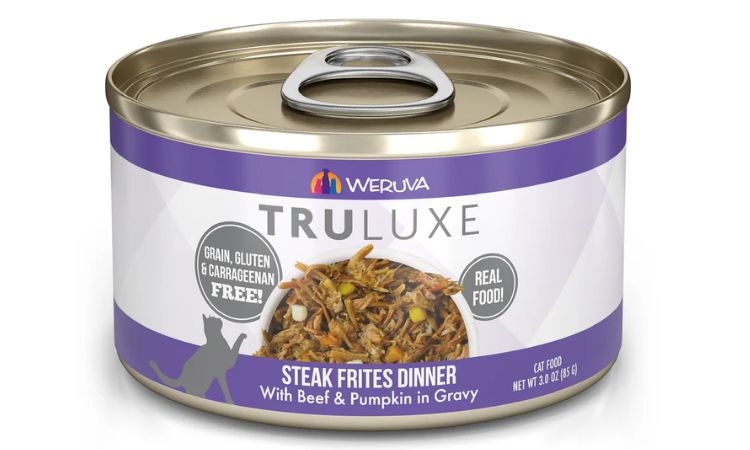
Weruva Truluxe is a wet cat food formula that is naturally low in phosphorus and sodium, making it suitable for cats with early-stage kidney disease. The beef and pumpkin combination provides high-quality protein and fiber to support digestion. Its gravy base also increases moisture intake, helping with hydration.
- Pros: Highly palatable, low phosphorus, hydrating, no prescription required
- Cons: Premium price, may need vet approval for advanced CKD
2. Ziwi Peak Canned Cat Food
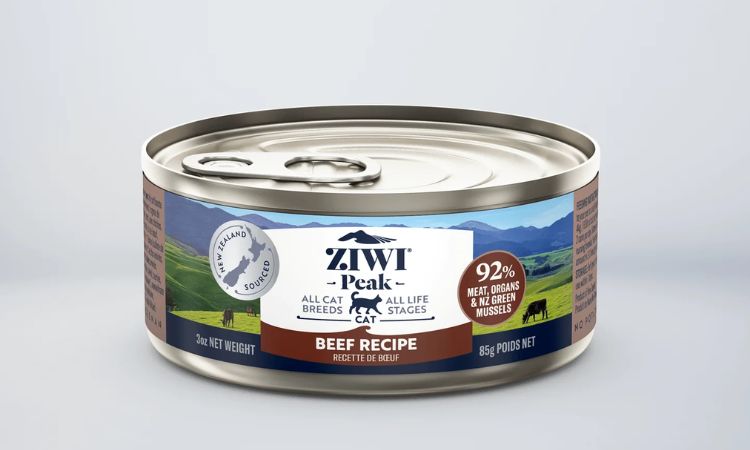
Ziwi Peak offers air-dried and canned cat foods made from high-quality, ethically sourced meats with minimal additives. The canned formulas have lower phosphorus levels than standard cat food, making them suitable for kidney-support diets. High moisture content supports hydration, and nutrient-dense ingredients help maintain lean body mass.
- Pros: Grain-free, high-quality ingredients, excellent hydration
- Cons: Expensive, protein may be slightly higher for advanced CKD
3. Forza10 Renal Actiwet with Lamb
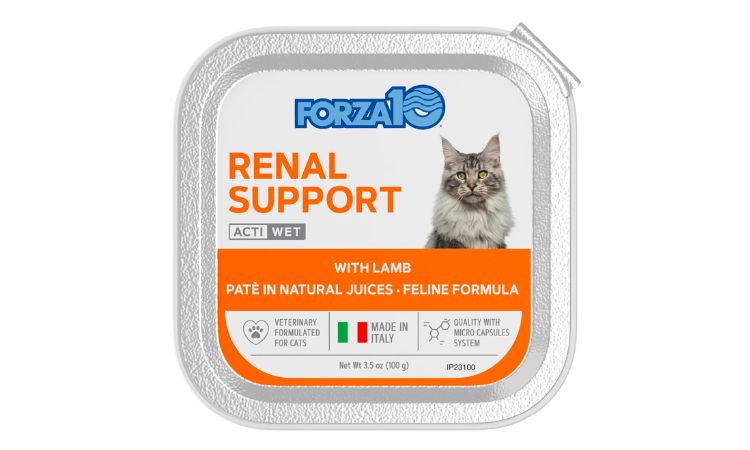
Forza10 Renal Actiwet is specifically formulated to be low in phosphorus while maintaining palatability. Developed by veterinarians and nutritionists, it contains high-quality lamb protein along with essential fatty acids to support kidney function and overall health. Available in both wet and dry forms, it allows flexibility for cats with CKD.
- Pros: Vet-developed, highly palatable, low phosphorus, no prescription required
- Cons: Limited availability in some regions, premium cost
4. Blue Buffalo Tastefuls Natural Flaked Wet Cat Food
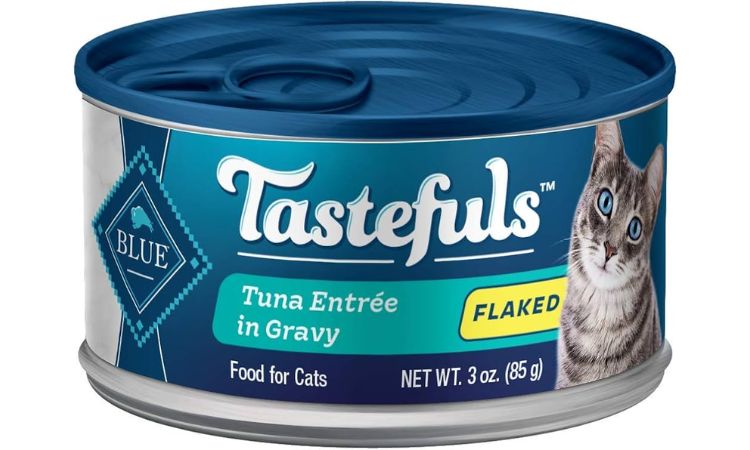
Blue Buffalo Tastefuls wet cat food is a naturally low-phosphorus option made with high-quality, preservative-free ingredients. Its flaked texture and gravy base make it highly appealing to cats, while the moderate protein content helps protect kidney function. Wet form encourages hydration, especially in cats that drink less water.
- Pros: Palatable, preservative-free, low phosphorus, widely available
- Cons: Not specifically marketed for kidney disease, protein content may vary
5. Dave’s Pet Food Restricted Phosphorus Chicken Formula
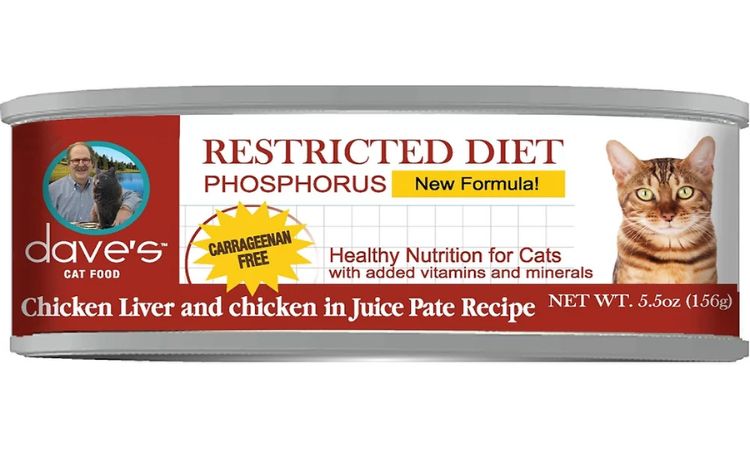
Dave’s Pet Food offers a specialized chicken formula designed to limit phosphorus while providing high-quality protein. This non-prescription option is particularly useful for cats in early to moderate stages of CKD who need a kidney-support diet without a vet prescription. It provides a balance of essential nutrients and is formulated for palatability and digestibility.
- Pros: Low phosphorus, high-quality protein, accessible, no prescription needed
- Cons: Limited flavors, may require vet approval for advanced CKD
How to Choose the Right Non Prescription Food for Your Cat’s Kidney Disease
Managing kidney disease in cats is challenging, but choosing the right non-prescription food can play a crucial role in supporting kidney function, maintaining body weight, and improving overall quality of life. While veterinary-prescribed diets are often recommended, many high-quality non-prescription options can complement treatment when chosen carefully.
1. Factors to Consider
When selecting a non-prescription kidney-friendly diet, it’s essential to take into account your cat’s individual needs:
- Stage of Disease: Cats in early-stage kidney disease may tolerate slightly higher protein levels and require less strict phosphorus restriction, while cats with advanced CKD benefit from diets with more controlled protein and lower phosphorus. Always consider your cat’s lab values and overall health.
- Appetite and Preferences: Cats with kidney disease can develop decreased appetite or nausea. Choose foods that are highly palatable and offer a variety of flavors or textures, such as wet food, pâté, or soft morsels, to encourage consistent eating.
- Food Allergies or Sensitivities: Some cats may react to certain proteins, grains, or additives. Non-prescription foods often provide alternative protein sources like rabbit, turkey, or fish, as well as grain-free options to reduce the risk of allergic reactions.
2. Tips for Transitioning to New Food Safely
Switching your cat to a new diet should be done gradually to prevent digestive upset and allow your cat to adjust:
- Start Slowly: Mix 25% of the new food with 75% of the old food for the first 2–3 days.
- Gradually Increase: Slowly increase the proportion of new food over 7–10 days until your cat is fully transitioned.
- Observe Appetite and Digestion: Watch for signs of diarrhea, vomiting, or refusal to eat. Adjust the transition pace if needed.
- Enhance Palatability: For picky cats, try warming wet food slightly, adding a small amount of low-sodium broth, or offering freeze-dried treats sprinkled on top.
3. Monitoring Your Cat’s Response
Even with high-quality non-prescription foods, regular monitoring is critical:
- Weight and Body Condition: Track weight weekly to ensure your cat maintains a healthy body condition.
- Water Intake and Urination: Changes in drinking or urination patterns may indicate worsening kidney function.
- Clinical Signs: Monitor for nausea, vomiting, bad breath, or lethargy. Any of these can signal CKD progression or poor diet tolerance.
- Lab Tests: Routine veterinary checkups including bloodwork and urine analysis help ensure your cat’s diet is supporting kidney health effectively.
When to Consult Your Veterinarian:
- Persistent vomiting, diarrhea, or loss of appetite.
- Rapid weight loss or dehydration.
- Behavioral changes or lethargy.
- Lab values indicating worsening kidney function despite dietary management.
Choosing the right non-prescription food for your cat’s kidney disease requires careful consideration of disease stage, appetite, sensitivities, and hydration needs. Gradual food transitions and close monitoring ensure your cat adapts well and maintains optimal kidney health. Always work with your veterinarian to confirm your cat’s dietary plan and make adjustments as their condition evolves.


